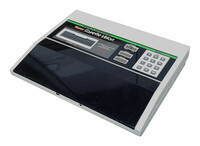Super Cassette Vision
| Home > Browse Our Collection > Games Consoles > Epoch > Super Cassette Vision |
|
The Super Cassette Vision was the last games console released by Epoch that took individual cartridges. It was intended as a rival to the Nintendo Famicom, but was only moderately successful in Japan. It was also the only Epoch console to be sold outside of Japan, mainly in France by ITMC, under the name Yeno Super Cassette Vision. The console would eventually sell around 300,000 units before being discontinued in 1987. In 1985 there was a version aimed at the female market, named the Lady's Super Cassette Vision. It was bright pink, and came in a pink case, with a copy of Milky Princess. This version of the console is one of the rarest releases of any console, and is highly prized today. At it's heart there is an NEC CPU, backed by 4KB of RAM. The cartridges could have their memory expanded, some titles reaching 32KB. They are brightly coloured, and were the first to have a battery fitted, so games could be saved with the power off. If powered on without a cartridge inserted, the console displays a screen of moving balloons, meant to show off the 128 sprite capability of the machine. The console has a numerical keypad for selecting such things as skill levels for the games, and there are two small controllers wired into the machine. These are kept under a tinted compartment at the front of the console. There is an on/off switch as well as a reset button. The SCV can be connected to a TV with an RF lead, or an RGB scart. If used in the UK, this can be a converted ZX Spectrum +3 lead if converted to swap the red and green wires inside the connector. Although little known outside Japan, this console has a very respectable library of thirty games, featuring effects that could be mistaken for a much later console. One such game is Star Speeder, with it's rolling, pseudo-3D road. Some games feature Epoch's mascot Doraemon, while others are conversions of older arcade games. Epoch were edged out of the market by Nintendo, who would not allow other developers to work on rival consoles as well as their own. Manufacturer: Epoch This exhibit has a reference ID of CH67123. Please quote this reference ID in any communication with the Centre for Computing History. |
|













